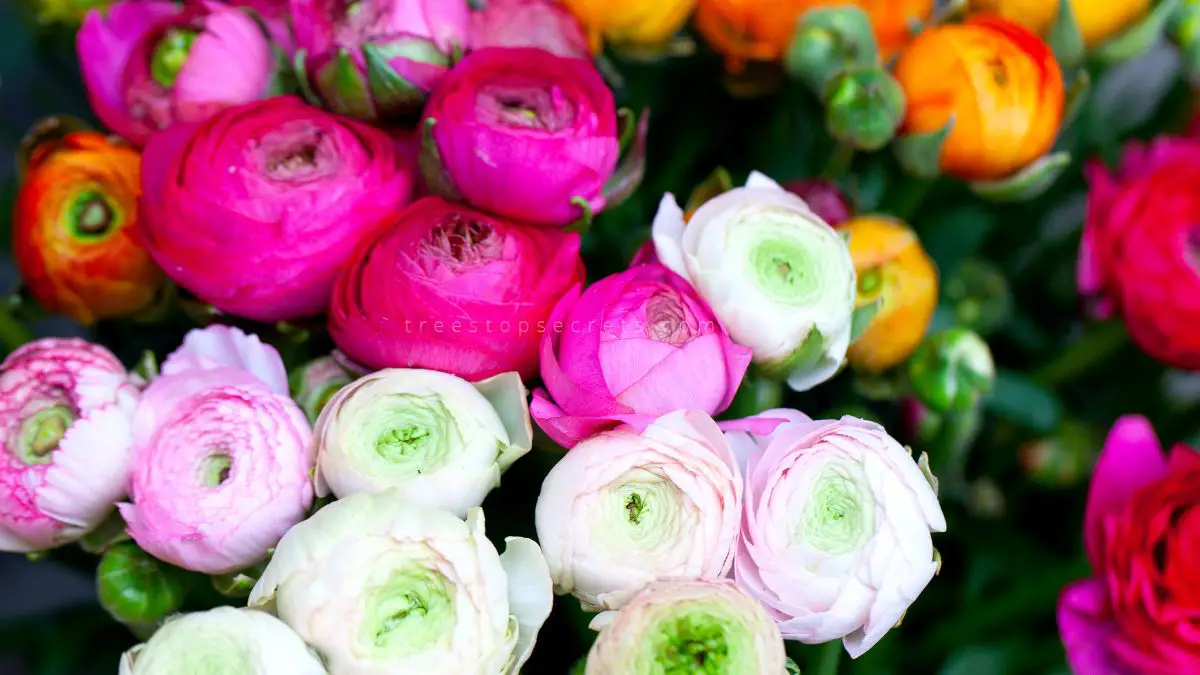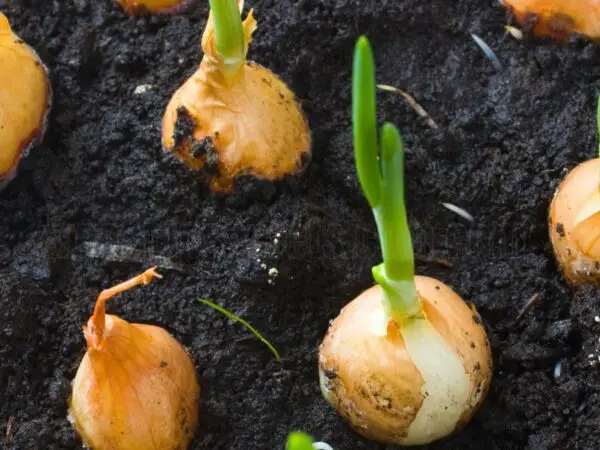Have you ever wondered about the enchanting allure of flowers during ranunculus season? This magical time of spring brings forth a burst of vibrant colors and delicate petals in flower fields and gardens that captivate all who behold them. Join us as we delve into the mesmerizing world of these stunning blooms, exploring their unique characteristics and the joy they bring to any occasion. Get ready to embrace the beauty of nature in full bloom and discover why ranunculus flowers are a must-have for your next floral arrangement. Let's unlock the secrets of this captivating season together!
Key Takeaways
- Understand the different seasons for ranunculus to choose the best time for planting.
- Select your ranunculus carefully based on the colors and varieties that suit your preferences.
- Prepare the planting area in the garden by ensuring well-draining soil and adequate sunlight for optimal growth.
- Plant your ranunculus bulbs with the claws facing down and spaced appropriately for healthy development.
- Provide consistent care and attention to your ranunculus plants, including watering, fertilizing, and protecting from pests.
- Enjoy the beautiful blooms of your ranunculus and harvest them for stunning floral arrangements.
Understanding Ranunculus Seasons
Best Planting Times
Plant ranunculus in late fall for early blooms in spring. Opt for early spring planting for a delayed but vibrant bloom. Choose the best time based on your desired flowering period.
Fall vs Spring Planting
Fall planting ensures earlier blooms with proper protection. Spring planting offers delayed but equally beautiful blossoms. Decide based on your climate and desired bloom timing.
Climate Considerations
Ranunculus thrive in zones 7b - 9 but can be grown in lower zones with care. Provide protection in colder zones to support growth. Consider your local climate for successful cultivation.
Choosing Your Ranunculus
Variety Selection
When selecting ranunculus for your garden, explore different varieties such as Amandine and Butterfly series. Amandine boasts large, fluffy blooms that add a touch of elegance to any garden. On the other hand, the Butterfly series showcases a unique petal structure that stands out amongst other flowers. Choose the variety that aligns with your preference for bloom appearance.
Corm Sizes
For optimal growth and blooming, it is essential to pick ranunculus corms of suitable sizes. Larger corms are known to produce more robust and vibrant blooms, enhancing the visual appeal of your garden. When planning your planting strategy, consider corm size as a crucial factor in ensuring successful cultivation of these beautiful flowers.
Quality Matters
To promote healthy plant development and thriving blooms, always prioritize high-quality ranunculus corms. Inspect the corms carefully before planting to ensure they show no signs of damage or disease. Investing in top-notch corms guarantees a successful and rewarding experience in growing stunning ranunculus flowers.
Preparing for Planting
Site Selection
When planting ranunculus, choose a sunny spot with good drainage to avoid waterlogging issues. Opt for a location that receives plenty of sunlight, ensuring optimal growth conditions.
Soil Prep
To prepare for planting ranunculus corms, set up well-drained beds and enrich the soil with organic matter. This amendment promotes healthier growth and creates an ideal environment for flourishing ranunculus plants.
Bed Planning
For effective flower bed planning, arrange the corms in rows with adequate spacing to support their growth. Consider the layout of your beds to facilitate efficient planting and maintenance routines.
Planting Your Ranunculus
Timing and Spacing
When planting your ranunculus, timing is crucial for optimal bloom. Make sure to space the corms adequately to avoid overcrowding, which can hinder growth. Following recommended timing and spacing guidelines is essential for successful cultivation.
- Timing impacts the bloom period.
- Proper spacing prevents overcrowding.
- Adhering to guidelines ensures successful growth.
Depth and Position
For healthy ranunculus plants, plant the corms 1 to 2 inches below the soil surface. Position the corms with fingers pointing downwards to promote proper growth. Consider both depth and position when planting for thriving ranunculus.
- Corms should be placed below soil level.
- Fingers pointing down aid in growth.
- Depth and position are critical for plant health.
Watering Needs
After planting, water the ranunculus corms into well-drained beds. Ensure consistent moisture without waterlogging the plants. Adjust watering frequency based on environmental conditions to support optimal growth.
- Water corms into well-drained beds post-planting.
- Consistent moisture is vital.
- Adapt watering to environmental conditions.
Growth and Care
Light Requirements
Ranunculus thrives in full sun, needing 6-8 hours of sunlight daily for healthy growth. Placing them strategically ensures optimal blooming.
Feeding Schedule
Maintain ranunculus health by feeding them with a balanced fertilizer during the growing season. Follow package instructions for best results.
Pest Control
Regularly check for aphids and spider mites, common pests that can harm ranunculus. Use organic pest control methods promptly to protect your plants.
Blooming and Harvest
Bloom Expectations
Expect ranunculus to bloom profusely over a 4-6 week period. Enjoy 5-10 blooms per plant during the blooming season. Harvest blooms at the ideal stage for long-lasting beauty.
Cutting Flowers
Harvest ranunculus blooms at the "marshmallow" stage for cut flowers. Cut stems at an angle for better water absorption. Enjoy ranunculus blooms in stunning floral arrangements.
Succession Planting
Plan for successive ranunculus plantings to extend the blooming season. Stagger planting times for continuous blooms. Implement succession planting for a prolonged display of flowers.
After Bloom Care
Post-Harvest Handling
Handle harvested ranunculus blooms with care to maintain their freshness and longevity. Before placing the blooms in water, ensure to remove any excess foliage as it can speed up decay. For an extended vase life, store the cut ranunculus flowers in a cool location away from direct sunlight.
Caring for ranunculus corms is essential for future planting endeavors. To save ranunculus corms, ensure they are properly stored after harvesting. Thoroughly dry the corms before storing them in a cool, dry place to prevent mold growth. When planning to plant them in the fall, rehydrate the corms beforehand for optimal growth results.
Corm Saving
Save your ranunculus corms by following proper storage techniques. After harvesting, make sure to dry the corms thoroughly before storing them. Placing them in a cool, dry location will help maintain their quality until the next planting season. Rehydrating the corms before planting in the fall ensures they have enough moisture for healthy growth.
Winter poses challenges for ranunculus plants, requiring specific care measures to ensure their survival and regrowth. During dormancy periods, it's crucial to dig up the corms and store them in an environment with low moisture levels and away from direct sunlight exposure. Protecting ranunculus plants during winter months is vital for successful regrowth come springtime.
Winter Care
Prepare your ranunculus plants for winter by taking proactive steps to safeguard their health during colder months. Before dormancy sets in, dig up the corms carefully and ensure they are stored in an area with minimal moisture content to prevent rotting. Keeping the corms away from direct sunlight exposure helps maintain their integrity throughout winter. By providing adequate protection and care during winter, you set the stage for vibrant regrowth when spring arrives.
Common Challenges
Managing Expectations
Understanding the natural blooming cycle of ranunculus is crucial for realistic expectations. Ranunculus blooms have a short lifespan, so expect them to last only a few weeks. Embrace the beauty of these flowers with a realistic perspective.
Troubleshooting Tips
Address fungal issues promptly during ranunculus growth to prevent further damage. Yellowing leaves or stunted growth are common problems that need attention. Implement effective solutions such as proper watering and soil drainage to overcome cultivation challenges.
Summary
In understanding Ranunculus seasons, you learned how to choose, plant, and care for these beautiful flowers. By following the steps outlined, you can ensure successful growth and a bountiful bloom. Remember to provide the necessary care post-bloom and be prepared for common challenges that may arise along the way. Your dedication will be rewarded with vibrant blooms and a stunning garden display.
Now that you are equipped with the knowledge to cultivate Ranunculus successfully, it's time to put your newfound skills into action. Get your hands dirty, plant those bulbs, and watch your garden transform into a colorful oasis. Share your blooming success with others and inspire them to embark on their gardening journey too.
Frequently Asked Questions
When is the best time to plant ranunculus bulbs?
The best time to plant ranunculus bulbs is in the fall, around 6-8 weeks before the first frost. This allows the bulbs to establish roots before winter and ensures a healthy growth cycle in the following spring.
How often should I water my ranunculus plants?
Water your ranunculus plants regularly, keeping the soil evenly moist but not waterlogged. Typically, watering every 7-10 days is sufficient, adjusting based on weather conditions and soil moisture levels.
What are common challenges when growing ranunculus?
Common challenges when growing ranunculus include overwatering leading to bulb rot, inadequate sunlight causing weak stems, and pest infestations like aphids or spider mites. Proper watering, sunlight exposure, and pest control measures can help mitigate these challenges.
How can I prolong the blooming period of my ranunculus flowers?
To prolong the blooming period of your ranunculus flowers, deadhead spent blooms regularly to encourage new flower production. Provide adequate sunlight, water consistently, and fertilize lightly to support continuous blooming throughout the season.
Are there specific pests that target ranunculus plants?
Ranunculus plants are susceptible to pests such as aphids, spider mites, and thrips. Regularly inspect your plants for any signs of pest infestation such as yellowing leaves or webbing. Implement natural remedies or organic pesticides to control these pests effectively.
Image Source: Paid image from CANVA




